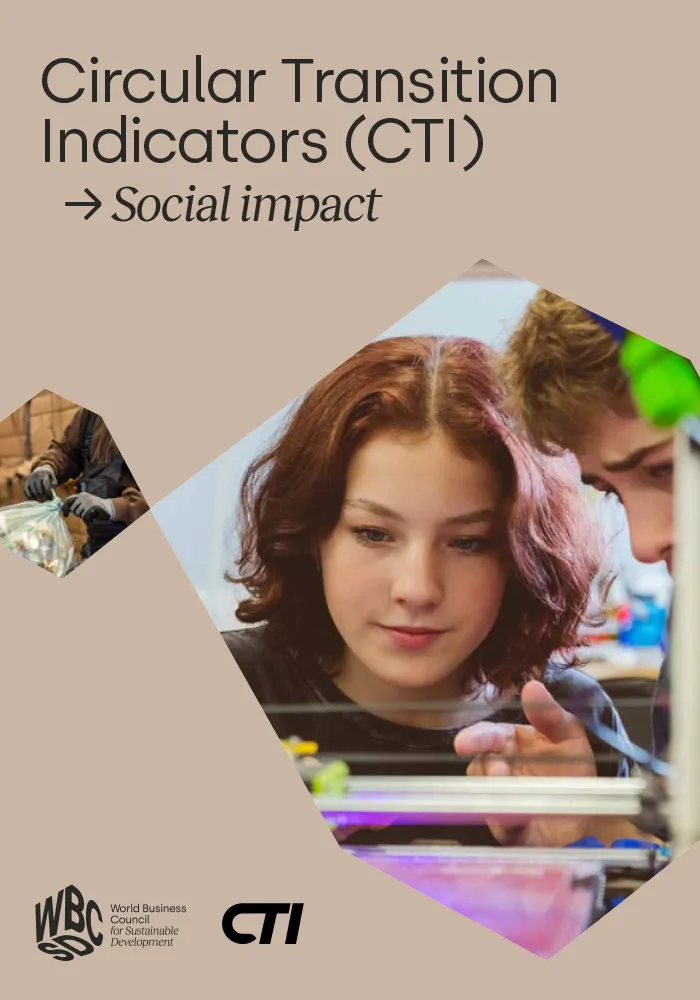Circular Transition Indicators (CTI) Social Impact guide
Published: May 14, 2025

Transitioning to a circular economy has the potential to accelerate the shaping of a net-zero, nature-positive and more equitable future. When intentionally inclusive and designed to mitigate social risks, it can improve livelihoods by enhancing working conditions, fostering inclusion in new business models and increasing transparency. However, the connection between circular economy strategies and social justice is still unclear. Companies often overlook or oversimplify the societal aspects in their circular economy efforts.
Developed in partnership with Utrecht University and KPMG and in consultation with WBCSD member companies, the CTI Social Impact guidance introduces a just transition-lensed methodology to support companies to strengthen the connection between circular strategies and their impact on people by assessing key human rights risks and emphasizing the creation of quality jobs for workers and affected communities.
Building on WBCSD’s globally recognized Circular Transition Indicators (CTI), CTI Social Impact offers a three-part approach that helps users:
- Design circular strategies and business models geared towards inclusivity and social justice
- Highlight circular strategies that deliver better outcomes for workers and affected communities
- Evaluate own company’s readiness and practices in managing circularity-related social and human rights risks
- Develop effective risk-mitigation strategies
- Identify circular strategies that enhance job conditions and deliver broader societal value
Seize the opportunity to discover the social impacts of your circularity transition.